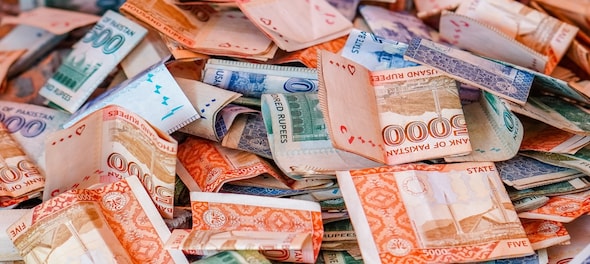
Foreign reserves with Pakistan's central bank, State Bank of Pakistan (SBP), dropped from $16.6 billion in January 2022 to $3.1 billion as of January 27, 2023 - further plunging the country's economy into deep crisis. On weekly basis, the SBP's net foreign reserves stood at $4.3 billion as of January 6. This tally plummeted further by over $1 billion till last Friday. The SBP number for this week are awaited.
On January 6, when Pakistan’s foreign exchange reserves had dropped $1.2 billion to $4.3 billion, the Dawn had warned that this amount is barely "three weeks’ worth of import cover". The drop was due to external debt repayments, the SBP was quoted by the report as saying. Pakistan is highly import-dependent, particularly with regard to energy.
| End period | Net Reserves with SBP (Million US$) | Net reserves with banks (Million US$) | Total Liquid FX reserves (Million US$) |
| Jan 6, 23 | 4,43,2 | 5,844.60 | 10,187.80 |
| Jan 13, 23 | 4,601.20 | 5,842.40 | 10,443.60 |
| Jan 20, 23 | 3,678.40 | 5,774.80 | 9,453.20 |
| Jan 27, 23 | 3,086.20 | 5,655.50 | 8,741.70 |
(Source: SBP)
Pakistan economy collapsing
The World Bank says Pakistan's total external debt stocks increased to $130.433 billion by end-2021 from $115.695 by end-2020. The country's external debt reached $126.9 billion in September 2022, the Central European International Cup's (CEIC) data revealed.
Right now, Pakistan's debt-to-GDP ratio is in a danger zone of 70 percent, and 40-50 percent of government revenue is earmarked for interest payments this year, Reuters reported. Out of Pakistan's $27 billion in bilateral debt, around $23 billion is made up of Chinese loans, the Mint said.
With the country already facing deep financial troubles, the recent data released by the SBP shows that the net foreign exchange reserves held by commercial banks stood at $5.6 billion, and total liquid reserves at $8.7 billion on January 27 - down from $10.1 billion on January 6.
Pakistan is in talks with the International Monetary Fund (IMF) for some relief. However, the global financial agency expressed concern that Pakistan's opposition parties might create hurdles in the way of implementing the tough economic decisions of the cash-strapped Shehbaz Sharif-led government, news agency PTI reported while quoting media reports said on Wednesday.
Pakistan signed a $6 billion IMF programme during Imran Khan's government in 2019, which was increased to $7 billion last year. The programme's ninth review is currently pending with talks being held between IMF officials and the government for the release of $1.18 billion.
But, the IMF suspended disbursements in November last year due to Pakistan's failure to make more progress on fiscal consolidation amidst the political turmoil in the country.
Meanwhile, as part of the tough decisions in the wake of economy crisis, the Pakistani government recently hiked the price of Liquefied Petroleum Gas (LPG) by 30 percent and finalised a minimum of Rs 6 per unit average increase in electricity rates between now and August, according to a report in the Dawn newspaper. Besides, the country is hardly able to fulfil citizen's basic needs.
First Published: Feb 3, 2023 7:27 PM IST
Check out our in-depth Market Coverage, Business News & get real-time Stock Market Updates on CNBC-TV18. Also, Watch our channels CNBC-TV18, CNBC Awaaz and CNBC Bajar Live on-the-go!


2024 Lok Sabha Elections | Why Kerala is in focus as the second phase begins to vote
Apr 26, 2024 9:33 AM
Bengaluru Rural Lok Sabha election: Over 8% voter turnout recorded by 9 am
Apr 26, 2024 9:11 AM

